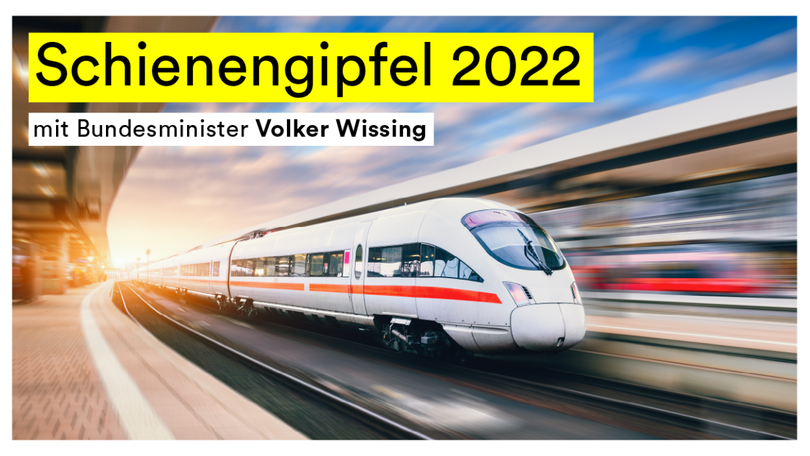
Source: BMDV
The 4th Railway Summit took place today at the Allianz Forum in Berlin. About 200 experts accepted the invitation by the Federal Ministry for Digital and Transport and gathered to discuss the challenges the railway industry is currently facing. The digitalization of the network, plans to rehabilitate the corridors and the second phase of the nationwide integrated regular interval timetable (Deutschlandtakt) were the main subjects addressed at the summit.
Federal Minister Dr Volker Wissing: “For me, one thing is certain: The Deutschlandtakt is the key rail sector objective that has been developed in cooperation with the entire industry. We will continue to pursue it, because it will lead us to what we have to achieve: on time, reliable, green, high-quality and attractive services for travellers and industry. To get there, we need to address digitalization, electrification, rehabilitation, upgrading and new construction as one. I will tie all the loose ends with a focus on the overall objective. However, truth be told: with the current state of the existing network we will not achieve our goals. A dilapidated network remains a dilapidated network, even if it is digitalized. At the end of June, I therefore presented some initial benchmarks for how to successfully synchronize all the necessary measures. I am delighted that Deutsche Bahn has accepted this mandate and presented a proposal which can now be finalized in close coordination with the entire industry.”
The following subjects were addressed at the summit in various panel discussions:
Digital transformation:
There is no way around the digitalization of control and signalling technology as well as the introduction of ETCS and digital signal boxes. The Federal Government is making available funds totalling approx. 7 billion euros for the introduction of ETCS, including through the Digital Rail Germany programme. The long-term aim is to introduce ETCS nationwide before 2040. The fact that our high-capacity corridors coincide to a high degree, in particular, with the Trans-European Corridors, which are to be equipped with ETCS by 2030, offers a high potential of synchronization, which we must seize by any means.
Infrastructure:
The Deutschlandtakt is the key compass for the evolution of the German rail infrastructure network. To achieve significant improvements in rail operations as quickly as possible, we will implement the Deutschlandtakt in various phases. The concept of potential output for the second phase, which was presented today, affects the timetables for the years 2026 to 2030. It outlines the intermediate target: half-hourly intervals for long-distance services between the major cities, resilient systemized train paths for rail freight and well-developed hubs from which the Deutschlandtakt can spread into less populated areas and lead to attractive local public transport services. What is obvious though is that the current state of the rail network does not yet meet the demands of the Deutschlandtakt, because without punctuality and reliability, connections will not work and goods cannot be transported smoothly.
The general rehabilitation measures in the high-capacity corridors, the Digital Rail Germany programme, electrification, maintenance and repair as well as upgrading and new construction in accordance with the requirement plan must be dovetailed. On heavily used routes, a mere software update will hardly accomplish the objective of an up to 30 percent capacity increase through digitalization. To reach such levels of capacity increase, supporting construction measures will be necessary and before the start of construction, detour routes for the affected corridors will have to be adequately upgraded. Complete failure or standstill cannot be accepted.
Today, DB Netz presented first details of the plans for the rehabilitation measures in the corridors. For more information please click here.